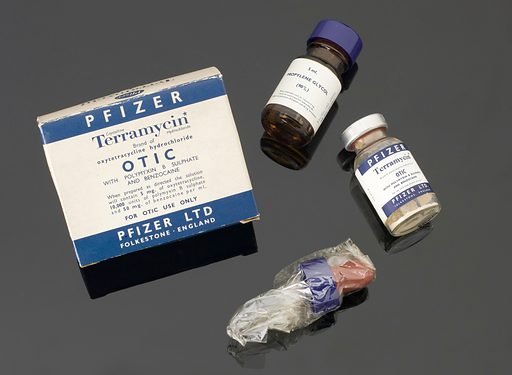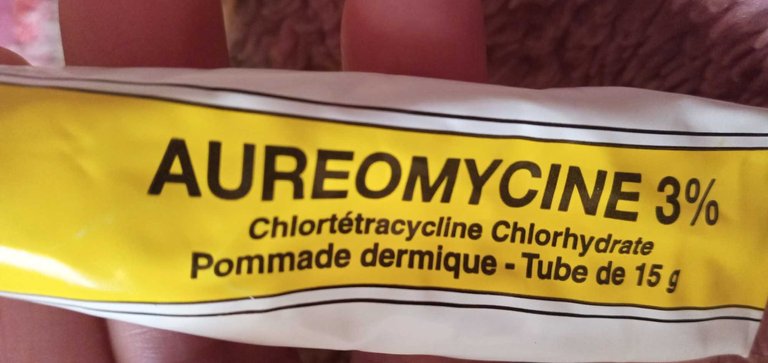Revolutionizing Medicine: Discovering Aureomycin and Terramycin in the Quest for Antibiotics
Antibiotics has become a part of our world but it wasn't so in the past. We know that Big Pharma make tonnes of money from drug production but it wasn't so with penicillin in world war 2. This is because the government paid lots of pharma companies to create it and flood the market with it, but while they didn't make much money from penicillin, they understood that they can do more research on different soil bacteria and fungi just to find antibiotics to treat other infections. In 1948, Lederle Laboratories came out with Aureomycin which was a reference to the gold bacteria they got the drug from, also it would refer to how much money they made from it.
Aureomycin was the first commercial tetracycline which was the first antibiotics that promised to treat a wide spectrum of bacteria. Lederle Laboratories made oral polio vaccines, and Centrum, a multivitamin. In other for them to run the antibiotic market, they decided to look for antibiotics in soil since Actinomycene was seen in the soil, followed by streptomycene which was the first class of Aminoglycosides and was the first antibiotics that was effective against tuberculosis.
They decided to hire Benjamin Duggar who was a Botany Professor Rtd. He was going to test numerous antibiotics from different part of the world against bacteria in petri dishes, looking for inhibition rings. In the search for antibiotics, they were not looking for bacteria that would focus on specific class of bacteria, rather they were looking for broad spectrum antibiotics that was effective against gram positive and gram negative bacteria. While they found some, they were too toxic to test on humans so they were not having any success until they found Streptomyces aureofaciens and called the antibiotic aureomycin.
Aureomycin was effective against gram positive and gram negative bacteria as well as bacteria that were resistant to sulfa drugs. It was not toxic in rodents and this was a positive sign that it might not be toxic in humans. It still had some bacteria that it could not cure infections of certain Pneumococcal bacteria. It was effective against Gonorrhea but not as effective as Penicillin and there were other bacteria infections that it could not cure and it could cure some. Aureomycin are bacteriostatic which means that they slow the growth of bacteria and this was why it could work against numerous types of bacteria.
In 1948, it received FDA approval, and Lederle began to spend lots of money on promotion and went to get a patent for this drug. While they were doing theirs, Pfizer a small Brooklyn chemical company was also looking to antibiotics that could treat diseases. They had created Citric acid in the past, and that was what made them known and were making lots of penicillin in large amount to sell but weren't lots of money from it as they would expect because of its numerous supply in public so they began to pursue soil microbes as well.

Image Credit
With lots of research, they found Streptomyces rimosus and it produced golden antibiotics of its own known as Terramycin but it was not patentable as it looked similar to Aureomycin. To get their patent, they had to find a difference and the difference came with Prof Robert Woodward who studied the molecular structure of the antibiotics. He saw that both drug were four ring structure which confirmed the name tetracycline (tetra - four, cycline - Circle), but then aureomycin had chlorine atom in its ring making it Chlortetracycline while Terramycin has an hydroxyl group on its ring making it Oxytetracycline and this made it easier to get a patent for it, which they did.
Despite initial challenges, scientists and pharmaceutical companies like Lederle Laboratories and Pfizer played pivotal roles in discovering these groundbreaking antibiotics. The pursuit of broad-spectrum antibiotics, effective against various bacteria, marked a turning point in medicine. Through meticulous research and innovation, these antibiotics paved the way for treating a wide range of infections, contributing significantly to the advancement of medical science. Some of the infections that Aureomycin could address included respiratory tract infections, skin infections, urinary tract infections, and certain sexually transmitted infections, and terramycin is effective against infections caused by susceptible strains of bacteria, including respiratory infections, urinary tract infections, skin infections, and certain eye infections.
Read More
https://www.ncbi.nlm.nih.gov/pmc/articles/PMC8143475/
https://link.springer.com/content/pdf/10.1007/s40828-021-00138-x.pdf
https://www.ncbi.nlm.nih.gov/books/NBK549905/
http://cmdr.ubc.ca/bobh/wp-content/uploads/2017/01/BC-Schurek-2012.pdf
https://www.ncbi.nlm.nih.gov/pmc/articles/PMC8707899/
https://www.annualreviews.org/doi/pdf/10.1146/annurev.py.20.090182.000341
https://timesmachine.nytimes.com/timesmachine/1956/09/11/84708966.html?pageNumber=35
https://www.nature.com/articles/163159a0.pdf
https://labeling.pfizer.com/ShowLabeling.aspx?id=14816

Antibiotics have proven to be really helpful, it's good to always know about the innovation and how things got to where they are today.
Thanks for your contribution to the STEMsocial community. Feel free to join us on discord to get to know the rest of us!
Please consider delegating to the @stemsocial account (85% of the curation rewards are returned).
Thanks for including @stemsocial as a beneficiary, which gives you stronger support.